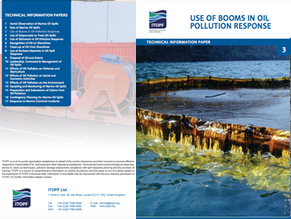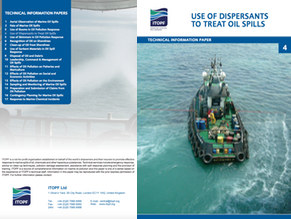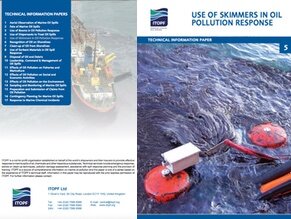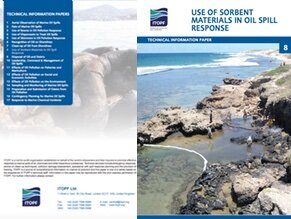Response Techniques
Once oil is spilled at sea, it will naturally spread, fragment and disperse under the influence of wind, waves and currents.
For spills in coastal waters, the oil will often drift towards the shore and become stranded due to the action of waves and tides. In order to contain the oil at the spill site, recover the oil floating on the sea and clean-up any oil that might become stranded on the shore, there are a variety of techniques that can be employed. The prevailing weather and sea conditions, the characteristics of the oiled shoreline and the nature of the oil can all combine to pose challenges to any clean-up operation.
At-Sea Response

Several options are available to respond to oil at sea and can be considered in three broad strategies; containment and recovery, in-situ burning and dispersant application. The selection of the most appropriate strategy will depend on many factors, including; the response resources available, the national and local regulations on oil spill response, the spill scenario and the physical and ecological characteristics of the area impacted by the spill.
Shoreline Clean-Up and Response

The majority of ship-source oil spills occur close to the coast and, as a result, many spills result in contamination of shorelines. Oil reaching stranding on the shore can cause significant environmental and economic impacts and may also largely determine the political and public perception of the scale of the incident, as well as the over costs.
When oil does reach the shoreline, considerable effort may be required to clean the affected areas. It is therefore essential that comprehensive and well-rehearsed arrangements for shoreline clean-up are included in contingency plans. The techniques available for shoreline clean-up are relatively straightforward and do not normally require specialised equipment. However, inappropriate techniques and poor organisation can aggravate the impacts caused by the oil itself.
Explore Documents on Response Techniques
01. Воздушное наблюдение морских разливов нефти
В настоящем Техническом Информационном Документе представлены рекомендации и инструкции по проведению эффективной воздушной разведки.
Categories: Fate of Oil Spills, Response Techniques, Planning & operations, Spill Response, Technical Information Paper (TIPS)
03. Применение боновых заграждений при ликвидации разливов нефти
В настоящем документе описаны принципы конструкции бонов и два основных режима их функционирования, а именно, буксирование судном в море и постановка на якорь на мелководье или в прибрежных водах.
Categories: Response Techniques, Containment & Recovery, Planning & operations, Technical Information Paper (TIPS)
04. Применение диспергентов для обработки нефтяных разливов
В настоящем документе приводится обзор преимуществ и недостатков применения диспергентов как одного из вариантов ликвидации разливов с судов при обработке нефти на водной поверхности.
Categories: Response Techniques, Dispersants, Technical Information Paper (TIPS)
05. Применение скиммеров при ликвидации разливов нефти
В настоящем документе описаны основные требования для успешного применения скиммеров в наиболее вероятных ситуациях при разливах нефти, и он должен рассматриваться вместе с другими документами ITOPF данной серии, в частности, с документами о применении бонов, методах очистки береговой линии и переработки нефти.
Categories: Response Techniques, Containment & Recovery, Planning & operations, Technical Information Paper (TIPS)
06. Установление наличия нефти на береговой линии
В случае крупных разливов источник выброшенной на берег нефти может быть очевиден, но при малых разливах и предъявлении исков о компенсации причиненного ущерба или затрат на очистку часто встает вопрос идентификации источника. Цель настоящего документа состоит в том, чтобы помочь в определении вида и количества разлитой нефти на различных береговых линиях.
Categories: Response Techniques, Planning & operations, Technical Information Paper (TIPS)
07. Очистка береговой линии от нефти
В настоящем документе описаны традиционные методы очистки береговой линии, а также представлены рекомендации по наилучшим
Categories: Response Techniques, Technical Information Paper (TIPS)
08. Применение сорбентов при ликвидации разливов нефти
В настоящем документе рассмотрены существующие виды сорбентов и то, как они могут эффективно применяться при нейтрализации разливов. Данный документ следует изучать вместе с другими документами Федерации ITOPF этой серии, в частности, о применении бонов, скиммеров, методах очистки береговой линии и утилизации нефти и мусора.
Categories: Response Techniques, Technical Information Paper (TIPS)







